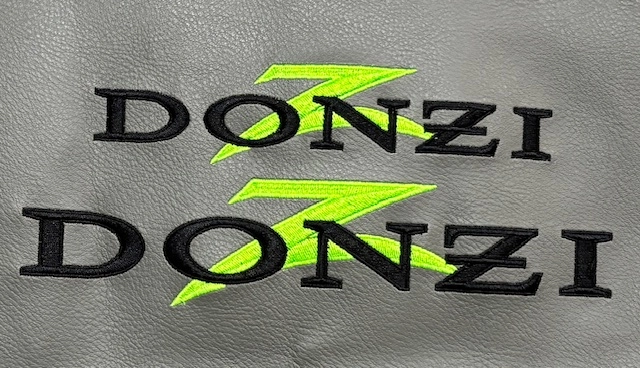The Art of Custom-made Needlework: Unlocking the Tricks to Creating Unique and Remarkable Layouts
Embroidery, a craft soaked in practice and virtuosity, holds within its elaborate stitches the power to transform fabric into a canvas of one-of-a-kind expression. The secrets to creating custom-made embroidery designs that astound the eye and leave an enduring perception depend on a delicate balance of strategy, creative thinking, and interest to information. As we explore the world of customized embroidery, we uncover the nuanced interaction in between string option, sew complexity, and layout personalization that elevates a simple garment to an artwork. Join us on a trip with the art of custom-made needlework as we decipher the secrets behind crafting absolutely memorable and distinct developments.
Choosing the Right Embroidery Threads
When choosing needlework strings, what essential elements should you think about to make certain the ideal outcomes for your customized styles? The choice of needlework string is vital in figuring out the last outcome of your stitched layout.
Thicker strings can include measurement and appearance to your design, while finer strings are optimal for detailed information and small text. In addition, considering the color fastness and washability of the thread is critical to make sure that your custom styles maintain their high quality and vibrancy over time.
Discovering Various Stitch Strategies
To dig right into the world of 'Discovering Various Stitch Strategies', one should comprehend the complexities and nuances that each stitching method gives the art of embroidery. Different stitch methods not only add aesthetic rate of interest but likewise add to the total structure and measurement of the design. One popular stitch technique is the satin stitch, which involves closely stuffed parallel stitches to produce a smooth and shiny surface, suitable for filling in shapes and developing bold outlines.
On the other hand, the backstitch is a flexible strategy commonly used for outlining and adding great information. It includes stitching backwards to develop a solid line of embroidery. In addition, the French knot stitch includes a tactile component to styles, excellent for developing textured accents like blossom facilities or decorative touches.
Discovering various stitch techniques allows embroiderers to have fun with light, darkness, and depth within their styles, raising the aesthetic charm and artistic quality of their embroidery tasks. By grasping numerous sewing techniques, one can unlock endless opportunities for producing unique and remarkable personalized needlework pieces.
Incorporating Personalized Style Components
Having actually checked out the complexities of various stitch methods such as the satin stitch, backstitch, and French knot, the focus now moves in the direction of including tailored layout components in custom embroidery projects. Individualized layout elements play an important function in making needlework projects absolutely one-of-a-kind and unforgettable.
An additional way to incorporate personalized layout elements is by including signs or motifs that hold special meaning to the recipient or show their interests and personality. For instance, incorporating a favored blossom, pet, or hobby-related sign can make you could check here the needlework design extra purposeful and individualized. Additionally, choosing colors that resonate with the recipient or line up with the intended motif can better improve the customization of the embroidery job.
Understanding the Art of Color Coordination
One trick element of shade control is comprehending shade theory. This includes recognizing how different colors engage with each various other, the emotions they convey, and how they can be incorporated to produce visually appealing designs. By using color concept concepts, embroiderers can create unified shade combinations that boost the overall appearance of the style.
Furthermore, taking note of comparison is important in color coordination. Using contrasting colors can aid specific components of the design pop, boost clarity, and produce a visually dynamic embroidery item. By understanding the art of shade coordination, embroiderers can elevate their styles and produce remarkable pieces that reverberate with clients and customers alike.
Enhancing Texture With Advanced Embroidery Stitches

French knots, for instance, are excellent for including small, increased dots to your layout, imitating the appearance of grains or developing a distinctive surface area. Bullion knots, on the other hand, can be utilized to create twisted, ropelike elements that include an extravagant feeling to the embroidery. Seed stitching entails tiny, scattered stitches that can fill out locations with a polychromatic structure, while turkey job creates cosy, dimensional accents reminiscent of pet hair or vegetation. Trying out these advanced needlework stitches permits you to press the borders of standard embroidery and create really unique and visually attractive textures in your layouts.
Verdict
In verdict, the art of custom needlework entails a mix of choosing the right threads, exploring numerous stitch strategies, including personalized style aspects, mastering shade control, and improving appearance with innovative stitches. By comprehending and executing these crucial elements, embroiderers can produce special and memorable designs that showcase their imagination and ability. Embroidery fanatics can open the secrets to producing gorgeous and bespoke items that stand out and leave a lasting impression.
Comments on “Customized Scrubs with Embroidery for a Specialist Appearance”